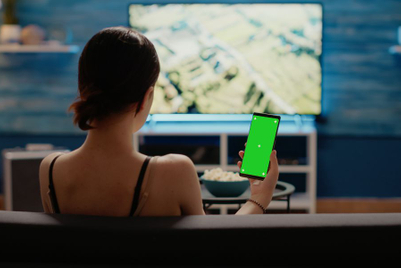.jpg&h=570&w=855&q=100&v=20250320&c=1)
Branding in 2024 isn’t about running after what’s shiny. It’s about building with intent.
For every minimalist wave that sweeps across industries, there is a bold, unapologetic trend rising to counter it. For every leap into the future, there is a pull toward nostalgia.
The brands making an impact this year are those that understand how to navigate these contrasts, grounding themselves in strategy while staying attuned to the world around them.
In 2024, we saw a remarkable shift in how categories, even the most traditional ones, are being reimagined. Legacy players are evolving, experimenting with new formats and ideas to stay relevant, while direct-to-consumer brands are entering spaces once ruled by giants, disrupting them with agility, fresh design, and bold thinking.
Reinventing the ordinary
It is easy to ignore categories that have stayed the same for decades, until someone changes the game. New brands are turning the mundane into something meaningful.
Take oral care, for instance. It was a space dominated for years by functionality—toothpastes that fought cavities, toothbrushes that removed plaque—all wrapped in designs that hadn’t evolved. Then brands like Perfora arrived, reframing oral care as self-care with sleek, skincare-inspired packaging, transparent formulations, and a focus on wellness.
The shift wasn’t just aesthetic; it was strategic. Perfora tapped into an audience that values design, clean ingredients, and products that feel personal. This ability to rethink the ordinary and deliver what consumers didn’t even know they wanted is why new-age consumer brands are making waves.
And it is not just oral care. Amul has been expanding into categories like health beverages, chocolates, and plant-based dairy. The dairy giant leverages its deep-rooted trust to introduce products that feel familiar yet modern. Its foray into these spaces is opportunistic and underpinned by a strategy that marries its heritage with changing consumer preferences.
Technology that disappears
In 2024, technology wasn’t about being loud; rather, it was about solving problems quietly. The smartest brands make tech feel seamless, almost invisible, so that the experience, not the technology, takes centre stage.
Spotify Wrapped is a perfect example of this. By using personal listening data to create playful, shareable moments, Spotify has turned what could have been dry analytics into something that feels intimate and fun. It is a yearly ritual that celebrates individuality while strengthening the bond between the brand and its users.
And then there is BlinkIt, redefining convenience with its ten-minute grocery deliveries. The technology behind it is complex, but for users, it is delightfully simple—groceries that arrive as fast as a thought. These brands prove that technology works best when it enhances the experience without overshadowing it.
Tata Tea’s hyper-local campaigns have been a standout this year. Instead of one-size-fits-all messaging, the brand leaned into India’s diversity, crafting stories that celebrated regional pride. From Kannada resilience to Punjabi camaraderie, Tata Tea didn’t just speak to its audience; it spoke as its audience.
This wasn’t pandering; it was precision. Tata Tea understood that in a market as diverse as India, relevance comes from acknowledging and respecting local identities. In doing so, the brand became more than just a product—but rather, a part of the cultural fabric of India.
Packaging as a salesman
In a crowded market, packaging is often the most influential sales pitch.
Brands like Slurrp Farm's bright, whimsical packaging appeals to parents and children alike, making healthier choices feel joyful. Ziaho, a premium Indian chocolate brand, exemplifies this trend. Its packaging celebrates India's linguistic diversity by incorporating regional scripts and ingredients, creating a unique visual identity that resonates with the modern Indian consumer.

This culturally resonant design has set Ziaho apart in the market, easing the consumer experience through thoughtful packaging. These brands understand that in the brief moment a product sits on a shelf—or appears on a website—packaging can make or break a sale.
If 2024 has taught us anything, it is that leading brands are not merely vying for attention; they are striving for significance. 2024 has been a year of thoughtful recalibration, where brands have learned that being loud isn’t enough. As we look ahead, this focus on clarity, authenticity, and meaningful connection will only deepen. Since the brands that endure aren’t the ones shouting into the void—they are the ones listening, adapting, and building with intent.

— Krupa Sheth Kapdia, co-founder and creative director, Stratedgy


.jpg&h=334&w=500&q=100&v=20250320&c=1)
.jpg&h=334&w=500&q=100&v=20250320&c=1)
.jpg&h=334&w=500&q=100&v=20250320&c=1)




.jpg&h=334&w=500&q=100&v=20250320&c=1)



.jpg&h=268&w=401&q=100&v=20250320&c=1)

.jpg&h=268&w=401&q=100&v=20250320&c=1)

.jpg&h=268&w=401&q=100&v=20250320&c=1)


